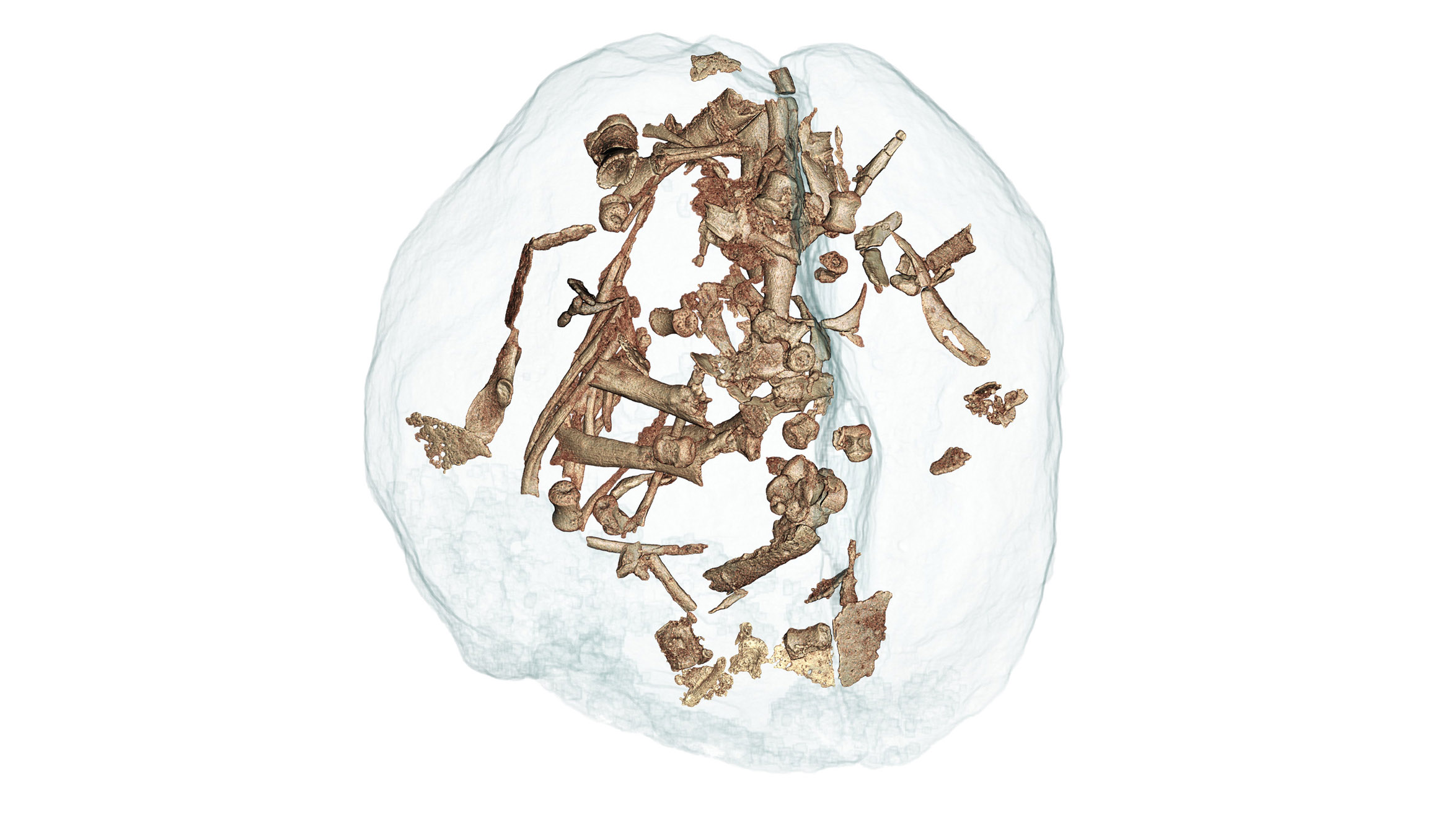Social life in the Jurassic
Fossils indicate that dinosaurs may have lived in cooperative herds as early as 193 million years ago.

To borrow a line from Jurassic Park: Dinosaurs do move in herds. And a new study by researchers from MIT, Argentina, and South Africa shows that they lived that way 40 million years earlier than previously thought.
Since 2013, members of the team have excavated more than 100 dinosaur eggs and the partial skeletons of 80 juvenile and adult dinosaurs from a fossil bed in Patagonia. Using x-ray tomography, they were able to examine the eggs’ contents without breaking them apart. The embryos confirmed that the fossils were all Mussaurus patagonicus—a plant-eating dinosaur of the early Jurassic period that is considered a sauropodomorph, a predecessor of the massive, long-necked sauropods.
To date the dinosaurs, Jahandar Ramezani’s lab at MIT analyzed zircons—mineral grains containing uranium and lead—in volcanic ash deposited in the sedimentary layers where the fossils were found. From uranium’s half-life, or the time it takes for half of the element to decay into lead, he calculated that the ash—and thus the fossils—was around 193 million years old.
Surprisingly, the fossils of eggs and hatchlings were found in one area, juveniles in another, and adults throughout the site. This “age segregation” may indicate a complex social structure. The dinosaurs likely worked as a community, laying their eggs in a common nesting ground. Juveniles would have congregated in “schools,” while adults roamed and foraged for the herd.
Sauropodomorphs originated in the late Triassic, shortly before many other animals went extinct, and held on to dominate the early Jurassic. This finding “raises the question now of whether living in a herd may have had a major role in dinosaurs’ early evolutionary success,” says Ramezani, an EAPS researcher. “This gives us some clues to how dinosaurs evolved.”
Keep Reading
Most Popular
Large language models can do jaw-dropping things. But nobody knows exactly why.
And that's a problem. Figuring it out is one of the biggest scientific puzzles of our time and a crucial step towards controlling more powerful future models.
How scientists traced a mysterious covid case back to six toilets
When wastewater surveillance turns into a hunt for a single infected individual, the ethics get tricky.
The problem with plug-in hybrids? Their drivers.
Plug-in hybrids are often sold as a transition to EVs, but new data from Europe shows we’re still underestimating the emissions they produce.
Stay connected
Get the latest updates from
MIT Technology Review
Discover special offers, top stories, upcoming events, and more.